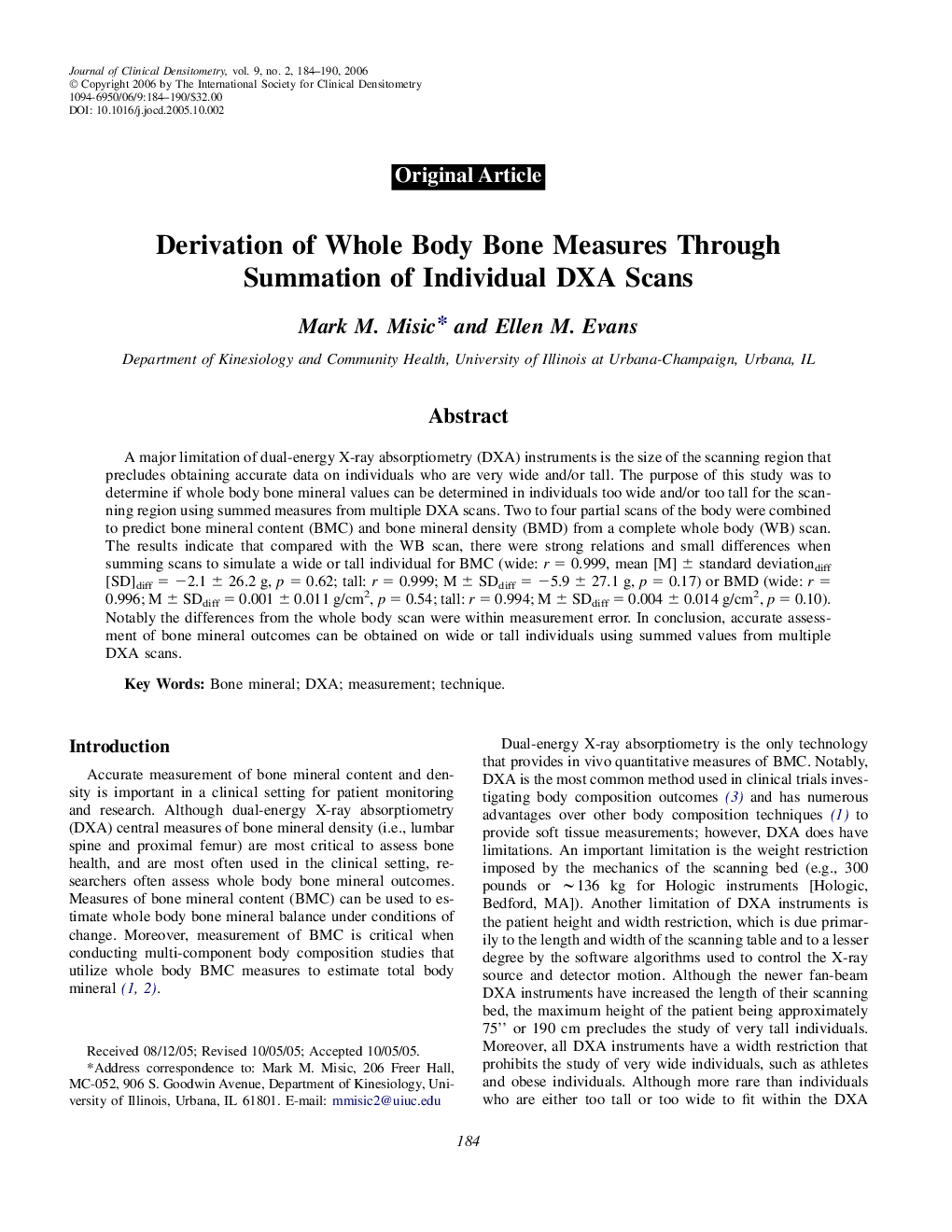| Article ID | Journal | Published Year | Pages | File Type |
|---|---|---|---|---|
| 3271859 | Journal of Clinical Densitometry | 2006 | 7 Pages |
Abstract
A major limitation of dual-energy X-ray absorptiometry (DXA) instruments is the size of the scanning region that precludes obtaining accurate data on individuals who are very wide and/or tall. The purpose of this study was to determine if whole body bone mineral values can be determined in individuals too wide and/or too tall for the scanning region using summed measures from multiple DXA scans. Two to four partial scans of the body were combined to predict bone mineral content (BMC) and bone mineral density (BMD) from a complete whole body (WB) scan. The results indicate that compared with the WB scan, there were strong relations and small differences when summing scans to simulate a wide or tall individual for BMC (wide: r = 0.999, mean [M] ± standard deviationdiff [SD]diff = â2.1 ± 26.2 g, p = 0.62; tall: r = 0.999; M ± SDdiff = â5.9 ± 27.1 g, p = 0.17) or BMD (wide: r = 0.996; M ± SDdiff = 0.001 ± 0.011 g/cm2, p = 0.54; tall: r = 0.994; M ± SDdiff = 0.004 ± 0.014 g/cm2, p = 0.10). Notably the differences from the whole body scan were within measurement error. In conclusion, accurate assessment of bone mineral outcomes can be obtained on wide or tall individuals using summed values from multiple DXA scans.
Keywords
Related Topics
Health Sciences
Medicine and Dentistry
Endocrinology, Diabetes and Metabolism
Authors
Mark M. Misic, Ellen M. Evans,
